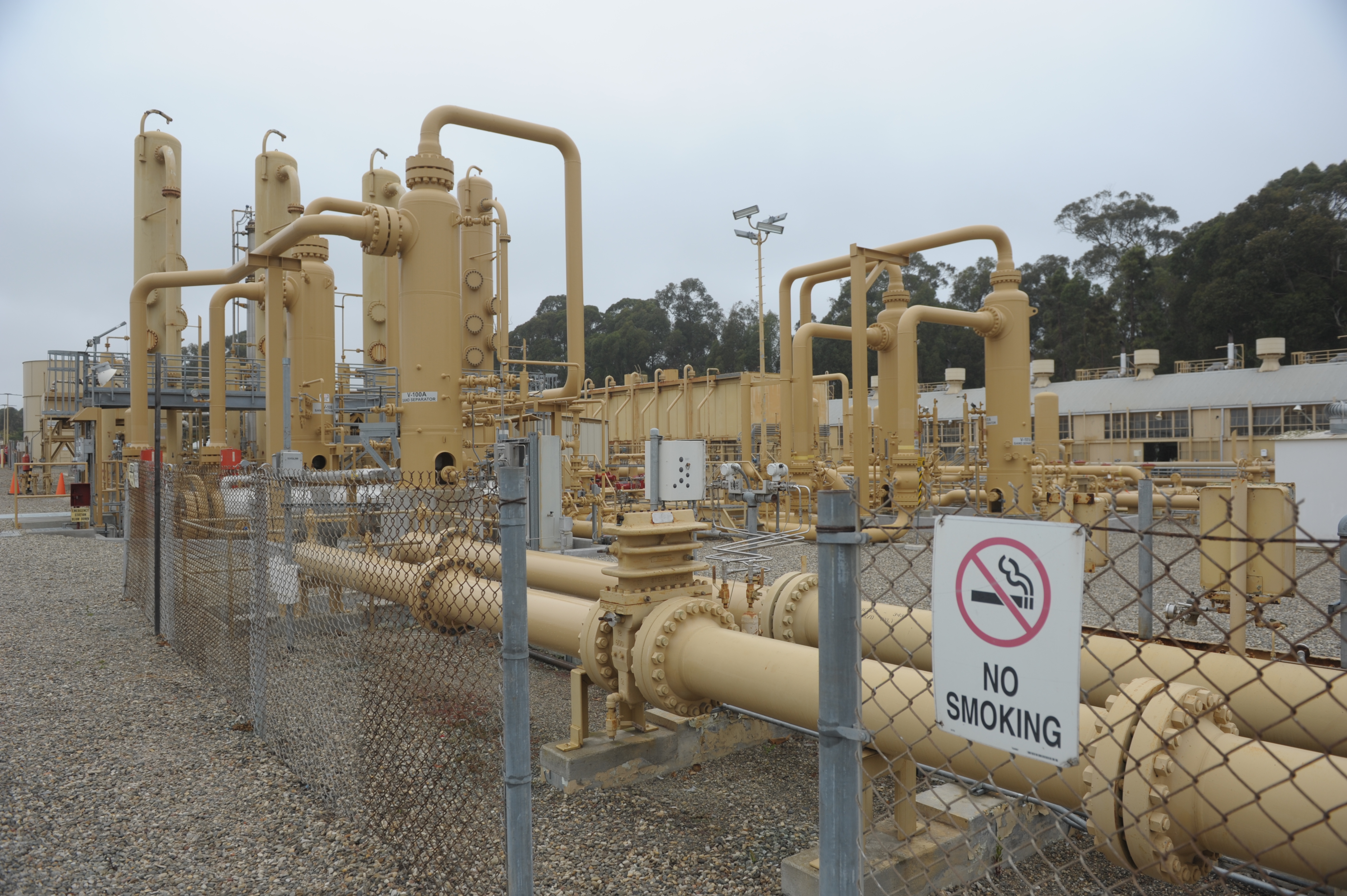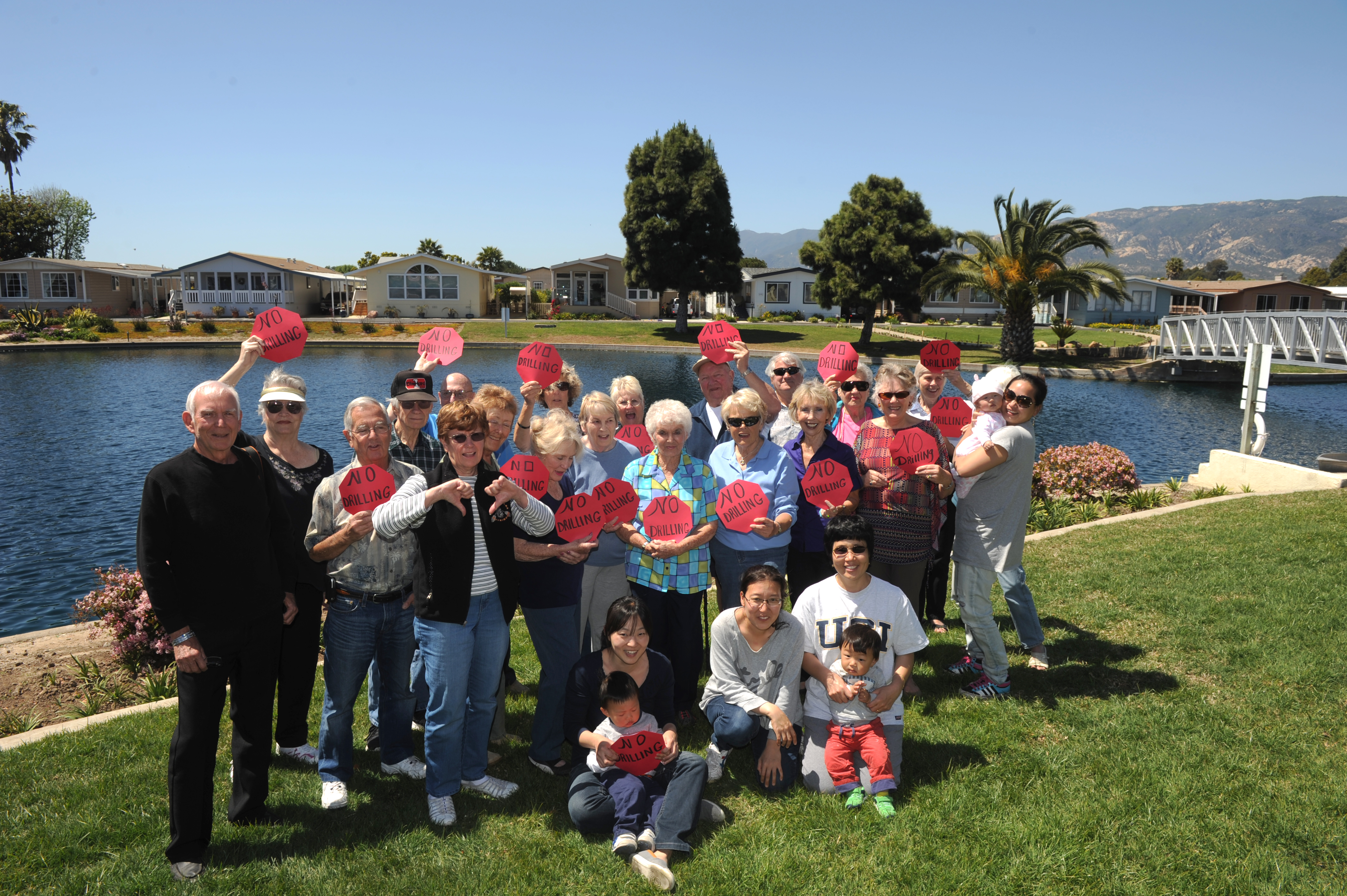Expanding Goleta’s Natural Gas Cellar
Residents Worried About Southern California Gas Company's Plans for Underground Storage Field

It’s like a sci-fi steampunk dream: eight 70-year-old piston engines the size of railway cars, each pumping and grinding with the power of 5,800 horses in a steady effort to compress natural gas, which is piped in from a dusty region far away, and send it deep into the bowels of the earth, where a rocky reservoir stores energy that society later taps to heat homes in the winter, cool them down in the summer, and keep stoves burning all year long.
This is no fantasy, though. It’s exactly what goes on all year long atop and below a coastal mesa wedged between Atascadero Creek and Goleta Beach at the end of More Ranch Road, where the Southern California Gas Company and its predecessors have operated La Goleta Storage Field since World War II. As a temporary home to gas that’s used by households and businesses from Ventura to Hearst Castle, La Goleta is one of four such storage fields across Southern California owned by the Gas Company, which saves money for its nearly 21 million consumers by banking gas when it’s cheap and then tapping reserves when prices soar.
“We’ve been in operation since 1941, and most people don’t even know we’re here,” said the company’s Glenn La Fevers, during a tour last month of the 150-acre facility, where about 20 buildings, 20 wells, and thousands of feet of pipeline are involved in storing 21.5 billion cubic feet of natural gas in a 300-foot-thick layer of porous sandstone about 4,000 feet below the surface. “We’re a very low-impact business for the community,” said La Fevers, “and we like it that way.”

But the largely invisible impacts are being tested for the first time in decades, as the Gas Company seeks to expand the storage capacity by three billion to five billion cubic feet, hopefully extracting some new natural gas along the way. To do so, the company is asking to drill four new wells (two into a known gas field, the other two exploratory; none of the four involve hydraulic fracturing, a k a “fracking”); install a new dehydration plant, which takes the water out of the underground gas once extracted so it can go right into the regional distribution system; and add 2,800 feet of pipeline.
While the experts are pretty sure there are at least one billion cubic feet of natural gas to be extracted during the process and sold on the market (again, the company explained, to the shared benefit of ratepayers), there may be as much as five billion cubic feet, which could elongate the extraction period to five years or more. Once emptied of existing gas, the reservoir will be converted for storage and pumped full of purchased gas, although the aforementioned compressor complex wouldn’t be part of this expansion.
First approved by the California Public Utilities Commission in 2006, the project is now in the final stages of review by the County of Santa Barbara, which released its final 511-page environmental report last week and will hold a hearing about the project on Wednesday, June 5, before the Planning Commission. Though imaginable hazards range from increases in noise, traffic, and lighting to the potential of a massive explosion, the only impact that the county has deemed significant is the many-months presence of a 172-foot drilling rig, which will be visible from Goleta Beach and require special lights at night so airplanes can see it. That said, the two radio towers already standing on the Gas Company’s property are already 250 feet tall.
While most of the community doesn’t realize that La Goleta Storage Field exists, one neighborhood is intimately familiar with the facility: Rancho Goleta Mobile Home Park, a resident-owned complex where 200 manufactured homes sit around a placid lake at the end of Ward Drive alongside Atascadero Creek and Highway in what must be one of the most upscale trailer parks on the planet.
Elaine Campo moved there in 1996, replaced her site’s former home with a new one, and quickly thought she was losing her mind when the place started sporadically vibrating.“At the very beginning, you could have put me in the loony bin,” said the oncology nurse. “I felt like I was in Motel, where you put the quarters in the bed.” A couple of engineer friends suggested it might have something to do with the Gas Company property across the creek, so she called them.While at first thinking she was a crackpot —“and I didn’t blame them,” she admitted — they realized the shaking was due to the compressors, which run a combined 3,000 or so hours per year, and responded to her concerns by adding braces to her home.
Since then, a few other residents with the same problems have been helped by the company, although at least one resident’s brass bed could be seen shaking during a visit in February, even after braces were installed. “We are committed to being good neighbors,” said Gas Company spokesperson Denise King,“and have worked closely to address these issues with those neighbors who have contacted us.” While current compressing will continue, King promised the new project won’t increase the amount, as the deeper setting of the new storage fields won’t require increasing gas pressure.
But Rancho residents still fear more noise, traffic, nighttime lighting, reduced property values, and possibly explosive disasters. The environmental report deemed such fiery incidents “very unlikely,” but 139 of the park’s residents signed a petition claiming that report “gives no guarantee to our ultimate safety.” Nearly 40 attended one of the earlier county hearings, dozens sent in boilerplate letters, and a group called Goleta Against Drilling formed this month, so far netting nearly 600 signatures via an online petition and promoting a screening of the antifracking film Gasland at UCSB’s Buchanan Hall on May 31. Neighbors on the other side of the project along More Ranch Road have also sent letters with mostly aesthetic concerns.
Stressing that the Gas Company has been a good neighbor but worried about what may come of the project if approved, Campo asked, “Where do you find a balance between them being able to run their company and the rights of the community? The problem is what someone says now and what happens in the end.You can’t put the genie back in the bottle.” Added her neighbor Madlyn Monchamp while looking at the park’s lake from her back window, “It’s a really nice place to live, and we want to keep it that way.”
Back at the facility, standing amid the puzzle of pipes that power the regionally important storage field, the Gas Company’s Glenn La Fevers assured that the project was good for all. “This facility has a great safety record,” he explained, overlooking the expansive patchwork of bucolic bluffs and asparagus fern fields planted by a farmer who leases the land.“We’re one of the biggest coastal properties still like this here, and we’re still here because of us,” said La Fevers.“ And we intend to stay.”
Read 511-page environmental report here.


